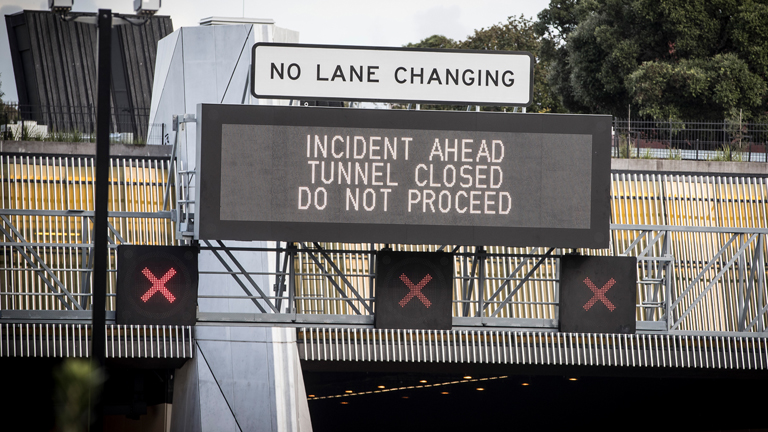Lives above lives below
A year after eager motorists made their first journeys through the just-opened Waterview Tunnel, Cherie Howie meets those making a living in it, and a life above it.
Visuals / Michael Craig. Design / Paul Slater
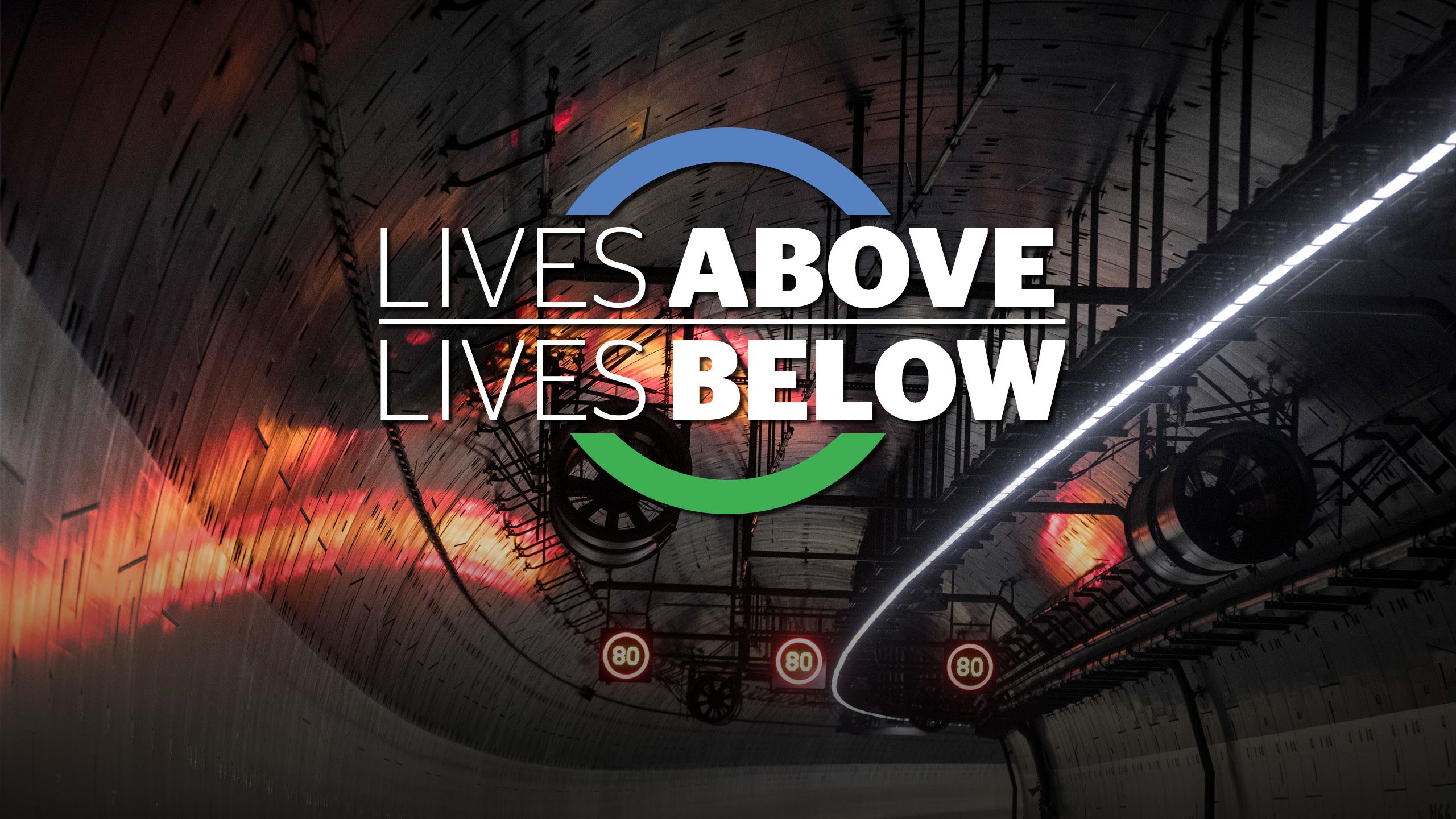
Home was a quarter of a rugby field above the earth, past the strip lights and the electronic signs and the pre-cast concrete rings, as the wheels turned on Matt Coldicutt and Rose Hansen's 2003 Nissan Primera stationwagon.
The Mt Albert couple were eating ice creams and celebrating the opening of New Zealand's longest road tunnel, one they don't actually use that much, but one which will always have a place in the story of their lives.
They got a box of boysenberry Trumpets from Pak’n Save, Coldicutt says of that first trip through the newly opened Waterview Tunnel.
"Then we just drove through the tunnel as many times as it took to eat the two Trumpets each. We went through two or three times."
They need little excuse to indulge in their favourite ice cream, the 31-year-old says.
But the couple do have an affection for that tunnel they hardly use.
They’re putting the building blocks of life together in their doer-upper first home - bought in 2013 before stricter deposit rules were imposed - above it.
The renovations roll on, the kōwhai and the Abyssinian banana palms – grown from next door's cuttings – are thriving, and four wee sweethearts have come into their lives, Rhode Island Red chooks Janis and Bessie, kelpie/wirehaired-pointer cross Poppy and, most recently, six-week-old son Tom.
There's a pride in the connection you have with an inanimate part of modern city life, when you know it runs right below you.
Especially when your twin brother only lives above the side of the tunnel across the street, Coldicutt boasts.
"We're on the apex, the high point of the tunnel," Coldicutt says proudly of the couple's Hendon Ave home.
"If you toot when you go past [southbound section] 54, you’ll know you're under us."
This is life above the tunnel that opened a year ago on Monday, quickening journeys and changing lives; the tunnel that took five years and the labour of 11,000 people to turn into reality.
There's life below, too, and not just that of the fleeting occupants of 63,000 vehicles passing through the twin tunnels each day.
Nudging the 80km/h speed limit it takes 2m 10s – you'll be singing the last chorus of The Beach Boys' I Get Around before you're back above ground – to connect from Auckland's Southwestern Motorway to its Northwestern Motorway, or vice versa.
It takes a hell of a lot longer to keep this $1.4 billion king of transport infrastructure running, and safely, so you can catch that plane, tuck your little one in at the end of the day or, if the mood takes you, eat a box of Trumpets and toot as you pass section 54.
Tom Coldicutt is, tiny fingers and toes crossed, still sleeping peacefully in his crib as Lee White pulls her boots on.
It's 5.30am and the site traffic management supervisor is at the Waterview office, at the northern foot of the tunnel, listening to the handover from the crew she relieved.
White is a member of one of the 24/7 roadside rescue teams who help unfortunate motorists who find themselves not moving, in a place built to keep people moving.
This morning, she might hear about breakdowns or flat tyres, or distressed people abandoning their vehicles.
A panicked driver who stopped during a failed attempt to conquer his phobia of the tunnel, and a broken down commercial airline flight crew, are among those White and her crew have helped.
The frightened driver was driven through by the rescue crew, to support him overcoming his fear; the flight crew were helped to the airport, potentially averting travel disruption for hundreds.
Then there's the motorists who run out of fuel and sometimes, in their shame, turning a simple mistake into a life-threatening situation, reminding White that what she does matters.
"We see people hitchhiking to get out, because they've run out of gas and they're scared. They don't realise we're coming. [Others] are crying in their cars when we get there."
Helping anxious people is just a part of the job, the trained social worker-turned-roadside-angel says.
"When that happens I just smile and we crack jokes and do what we need to do. Just, 'Oh bro, you're not the first one and you won't be the last. It's all good'."
Only the earliest commuters are on the road now, the ones who beat the traffic and the sun before our biggest city morphs into a giant car park.
But White and her colleagues are ready to help at any time.
Back at Hendon Ave, baby Tom's day starts soon after White's.
He has a feed with mum as Coldicutt fulfils Poppy's "rain or shine morning walk policy" before 7am.
After a cuddle goodbye, Coldicutt is on his bike by 7.30am, bound for Western Springs College, where he's head of technology.
He'll be there in 15 minutes, thanks to the Shared Pathway, a combined walking and cycle path built as part of the Waterview project after locals fought for benefits from the tunnel.
"It's wicked. People aren't trying to kill you every day anymore."
Back at the Waterview office, tunnel maintenance manager Andrew Musgrave and his team are looking over non-urgent jobs passed on by the night shift.
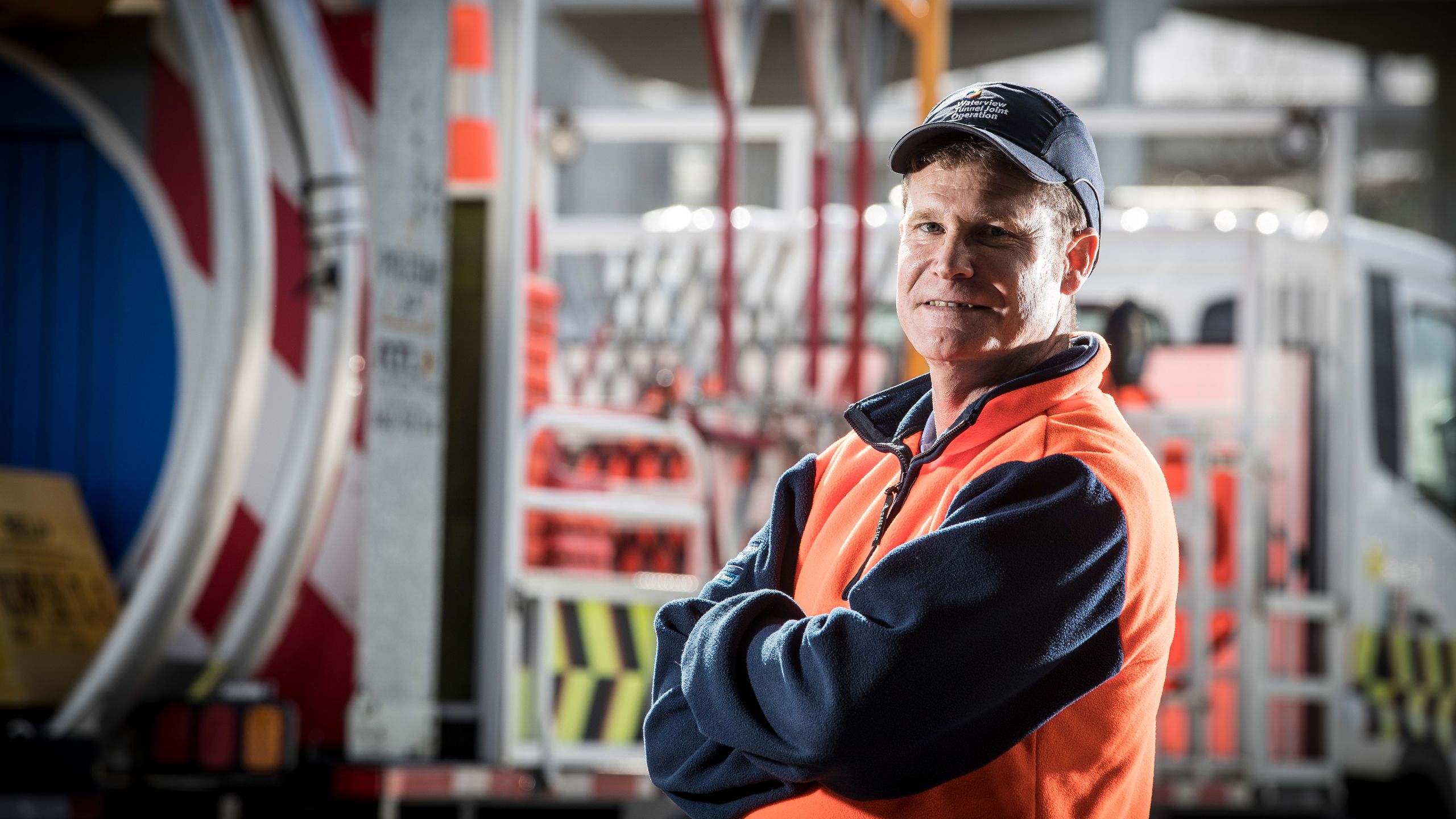
After peak traffic they'll start on the daily list of tasks from the 85-page safety checks and maintenance manual Musgrave keeps at his side.
To get through the list of weekly, monthly, quarterly and yearly checks, they plough through a daily schedule of jobs that can be done in traffic-free areas of the tunnel.
Other work, such as major fire suppression system checks, are ticked off during monthly or quarterly night-time closures, albeit sometimes to the chagrin of a perplexed public, he says.
"[People say] 'It's a new tunnel, how come you're in there already?'
"The tunnel's like an iceberg. People drive through it and see the top little bit, or that it's a hole in the ground."
"Even my mother asks, 'Is [tunnel maintenance] a full-time job?' I say, 'mum, there's more to tunnels than meets the eye'."
On the other side of the portal, Waterview School teacher Alisha Bliss and her colleagues are setting their own goals for the new day.
Young voices will soon fill the shared classroom, but for now Bliss and the other teachers enjoy some peace in the window seat overlooking the tunnel entrance.
The sun is up and the view is tops.
"We feel like we have the best [classroom] hub, because we've got the best view of the tunnel entrance."
A couple of hours later, kids have replaced the teachers in the window seat. Year 3 pupil Luke Carter is among them.
He's "not really" interested in the view, Luke says.
What he likes is hanging out with his friends and mastering his favourite subject, maths.
It's no surprise the tunnel is a mundane part of life for the 7-year-old.
Planning for it started before he was born, the first works barely after his first steps.
As Luke and his friends tackle the nuances and intricacies of persuasive writing, over in the next suburb Vel and Barry Gordon are switching on the heat pump and putting out the chairs.
It's 11am and the couple are preparing to host Mt Albert Spiritualist Church's weekly healing.
They won't be long – healings only take about 10 minutes each, Barry says.
"If you're going for half an hour, it becomes boring for the healer and the recipient."
The couple know the tunnel runs below the humble house-turned-church, not that they've ever felt or heard anything.
Given their beliefs, it wouldn't necessarily be unwelcome.
Vel laughs as she remembers her response when she learned the ambitious roading project would run below.
"[I said] 'Oh well, good, we'll have some new vibrations'."
That's a good sign, she says.
Vibrations mean healing is taking place.
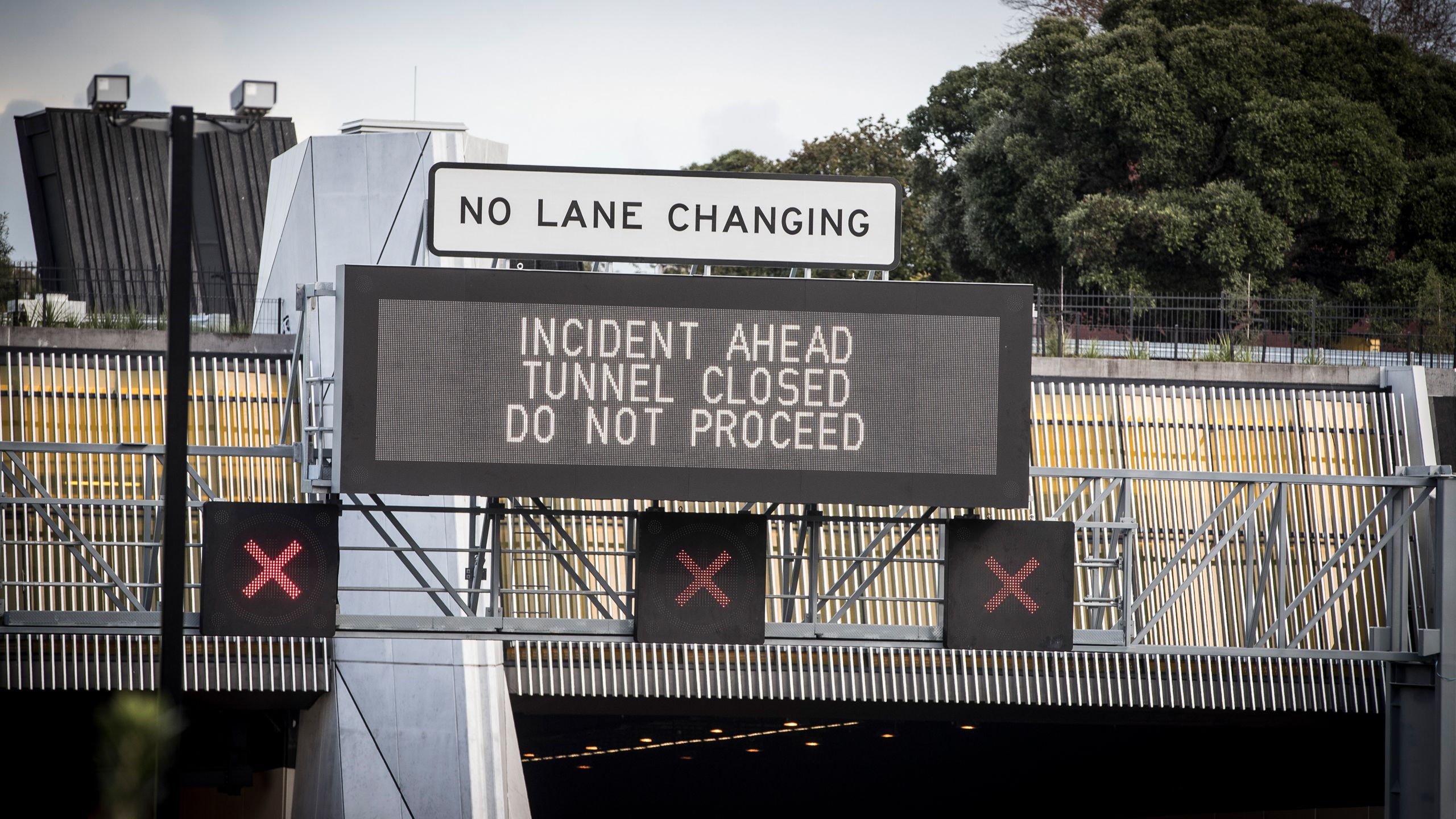
The sun's halfway across the sky now and White is halfway through her shift.
She might've had a stack of jobs, or none at all.
"Some days you're flat out and some days you're not. Every day is different."
Musgrave's team are on task too, steadily crossing off the "back of house" jobs.
"While everyone's driving through, we might be in the cross passages, inspecting and servicing all the [fire suppression] deluge valves, looking at the lights, the warning systems, the PA [public address] system."
In the early afternoon, one of those well-maintained warning systems does its job, as an over-height truck triggers a warning and gates swing across to shut the south-bound tunnel.
Hi-vis vests on, Musgrave and others rush outside to discover an embarassed truckie on top of his trailer, crunching down wayward branches.
Emilio Marquez is outside, too, interrupted from some of the dozens of jobs he oversees as the Waterview Tunnel joint operation alliance operations manager.
The Spaniard came to New Zealand in 2010, in the very earliest stages of the project, continued through construction and remained to lead the 10-year operations and maintenance contract.
"I'm responsible for all the people working for the tunnel ... making sure all the systems installed down there, they work as they're expected to do."
A lot can go wrong – they’ve identified and planned for 128 different scenarios per tunnel to be exact, he says.
That includes 86 different places in the tunnel where fire can occur.
"And in terms of fire there's different kinds of fire, such as vehicle incidents, accidents, fire detected automatically, fire initiated by the operator, plant equipment fire."
Other scenarios planned for include civil unrest, earthquakes and tsunami.
But Marquez is no doom merchant.
He sleeps "very well" at night, the father of two says.
"You get used to it. And mainly because of [safety] exercises, because they help to build confidence.
During the [pre-opening] testing, I think in just one weekend we tested 200 different fire scenarios.
"So when you see all of them working, obviously you start building your confidence."
Mt Albert Grammar schoolmates Brodie Lunjevich, Isaac Ede Larsen and Ned Taylor can relate.
After school, the 15-year-old friends like to ride the pump track at the Waterview Reserve BMX park, next to the northbound tunnel exit, where public amenities built as part of the motorway project include a playground, basketball courts and skate park.
Isaac was "too scared" to tackle the bumps at first, he says.
But the hours of practice have paid off.
"Whips", flicking the back wheel to the side while airborne; "bar spins", spinning handlebars mid-air; and "tuck no handers" are part of their hours at the park now.
"We come here as much as we can."
Over at Valonia Field, next to the tunnel’s southern portal, a Division 4 football match is underway in the afternoon sun.
James Mitchell, 18, is wearing the Eastern Suburbs strip in his first season back playing a sport he "loved as a kid".
Off field, his focus is on his commerce studies at the University of Auckland. On field, his focus is only on the game.
The switch in thinking relaxes him.
Chasing a ball with 21 others is also about friendship, and community.
"It's like belonging."
It's the same feeling White gets when she's with her team.
The bond is so strong she'll come in her own time to the overnight closures of the tunnel, when some of those dozens of fire scenarios Marquez talks about are tested.
"I just do it to be nosey and hang out with the boys."
As the city settles into the night, as tired mums and dads like Coldicutt and Hansen collapse into bed, down below, the work goes on.
Lee Bodell is pouring peanut oil into a faux smoke-making machine.
To the right of the Waterview Tunnel joint operation traffic and incident response manager, three people in red-smeared boiler suits mooch around a mock multi-car crash in the closed northbound tunnel.
The "injured" joke among themselves as they're helped, first by White's colleagues, and then by emergency services' workers – the fire service and an ambulance have arrived.
"Which one of you was the bad driver then, ay?", an "injured" person asks.
Over the tunnel's public address system – designed to hijack vehicle radios if need be – a booming voice announces the mock crash exercise is underway.
The blaring message is why pre-recorded annoucements are used in real emergencies, Marquez says.
"When people are excited they tend to shout, and when you shout the speakers don't work as well."
The night tests end with the switching on of one of 173 30m-long deluge zones inside the tunnel.
The deluge system drops 10 litres of water per second, more than any rain event could, and workers and contracters gather to watch its power on display.
The misty downpour, fed by five deluge storage tanks each containing 250m3 of water, also helps keep the walls – cream-bottomed and black-topped, for safety reasons – clean.
Looking after one of the country's most recognised public works assets is a matter of pride and pragmatism for those tasked with its care.
That 85-page manual he keeps at his side, it's just "part of maintaining a live asset", Musgrave says.
A deteriorating tunnel means more work, and less dollars in taxpayer pockets.
"Not only are we here to keep Auckland moving, we're also here to provide value for money ... we're all taxpayers, so the best value we can get means there's more money for other things."
And this tunnel, where he spends so much of his life, isn't just a place to earn a crust. It's about those he holds most dear, too.
It brings them together, he says.
"We've all got friends and family and we all want to have a reasonable quality of life, so it's quite rewarding in that respect.
"You're actually making a contribution to society, rather than just turning up and thinking, 'Ok, I've got so many job sheets to get through'."
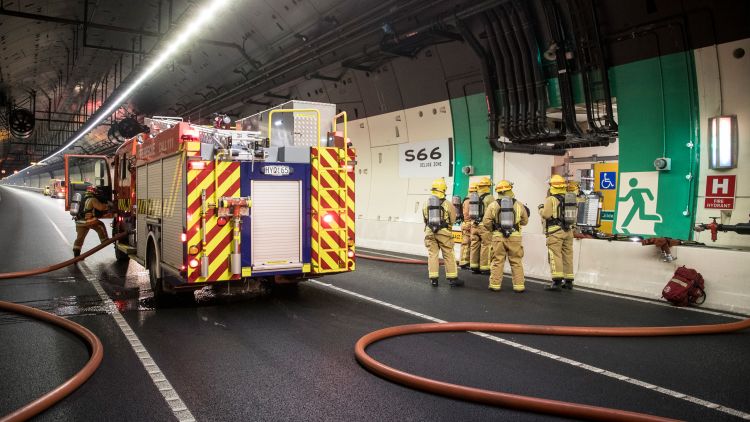
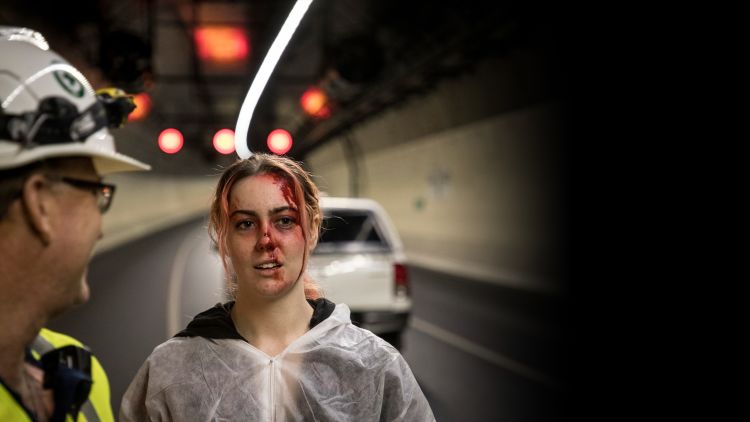

Giving back – Asim Li and Sidra Gul want that for their legacy, too.
The couple's hope is for their two children to get a good education and have settled jobs "so they can contribute to society", Li says as the family shops at Mt Albert Pak'n Save, where the tunnel curves below his
feet in the supermarket's bread section.
With a home in Manurewa, work in Highbrook and family in Mt Albert, infrastructure to get from A to B to C, and back again, matters.
"I think there should be a lot more of that [transport planning], especially for the future generations," Li says.
At his side, 10-month-old Eesa and 3-year-old Amani coo and giggle as their dad talks about the future he dreams of for them.
In an hour or so they'll be home, fading fast as mum and dad put dinner on the table.
Later, the young parents will tuck their babies into bed, eventually joining them in peaceful slumber.
The warmth of a new day edges closer.
Across the city, past the thousands of homes and businesses that sustain this jam-packed isthmus, and the grey slivers of crushed stone and bitumen that connect them, Lee White is about to begin another shift.
Wee Tom Coldicutt, snug in his sky-blue sleep suit, is in baby dreamland.
White is pulling on her boots.




